Barbeque
You can make a barbecue, outdoor fireplace or tandoor from used bricks. The simplest option is to lay out a square or rectangle 3-4 rows high on a pre-leveled area. If you put an old hob on top, you will get something like a summer kitchen where you can cook a full meal.
If you cook shashlik quite often, it is worth building a more solid structure. You can lay out a stationary barbecue area with a chimney and a small table for cooked meat and vegetables.
Only fireproof bricks are suitable for this work, for example, those left over from dismantling an old stove.
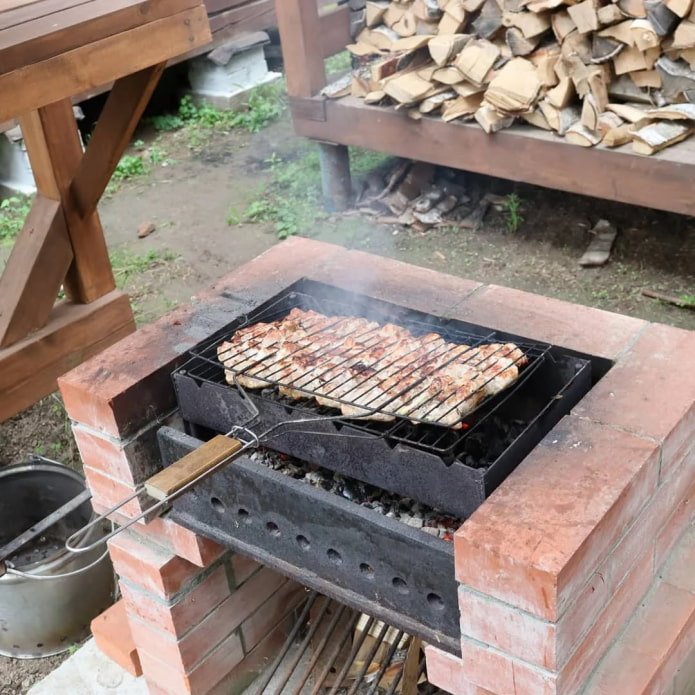
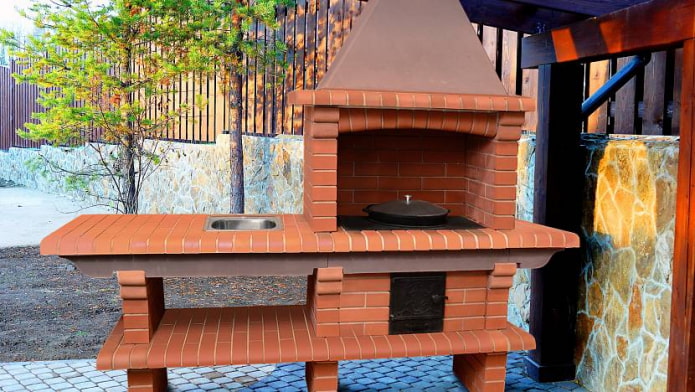
Bench
In combination with wooden slats, brick is actively used to arrange a place of rest. It will take only a couple of hours to lay out reliable legs for a garden bench or table, but the structure will last for many years.
If you have a lot of bricks, you can lay out a round bench around a flower bed or in the trunk circle of a tree. The seat can be made of lining, remnants of decking or planken.
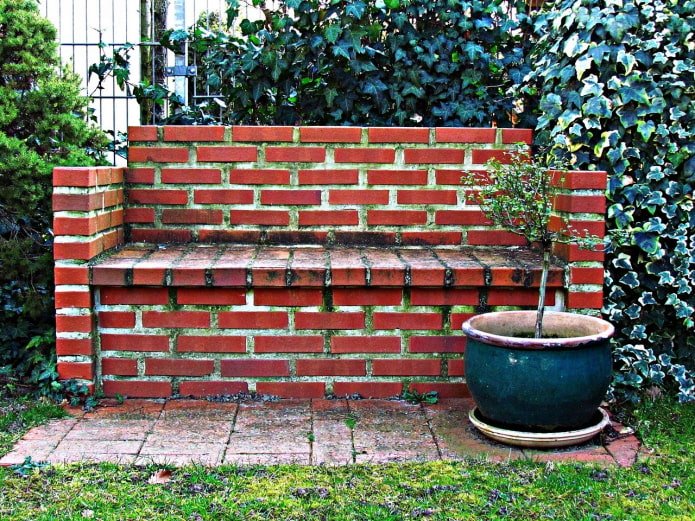
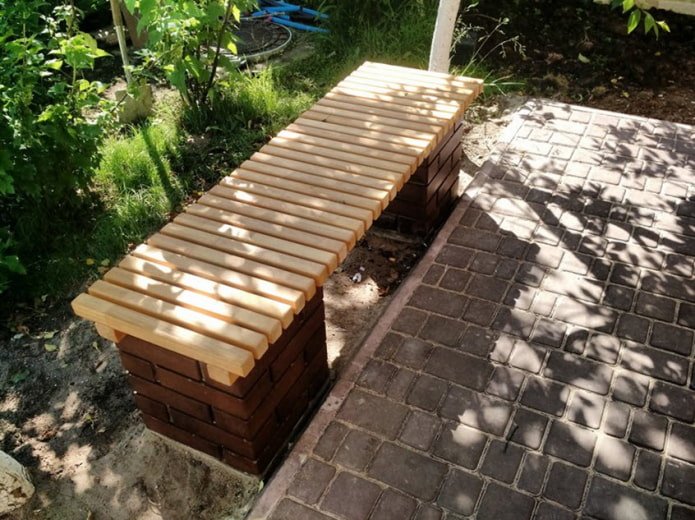
Paths
For garden paths, use whole or broken bricks. In the latter case, large pieces should be additionally crushed into small fractions from 3 to 7 cm in length. In order for the paths made of “broken” bricks to serve for many years, it is important to prepare a reliable foundation.
- A trench 15-25 cm deep is filled with an even layer of sand. Geotextile is laid on top.
- A drainage “cushion” is formed from small crushed stone.
- Sand or a cement-sand mixture is poured on top of the crushed stone again.
- Broken bricks are laid on top of the embankment, tamping with a hammer.
To prevent the edge of the path from “creeping”, it is worth making side stops along the entire length. The same brick is used, laid on the edge or wooden slats.
When paving paths from solid bricks, you can experiment with the laying pattern. Paths laid out in a herringbone pattern, diagonally, in blocks of 2-3 bricks or in a line with bandaging always look original.
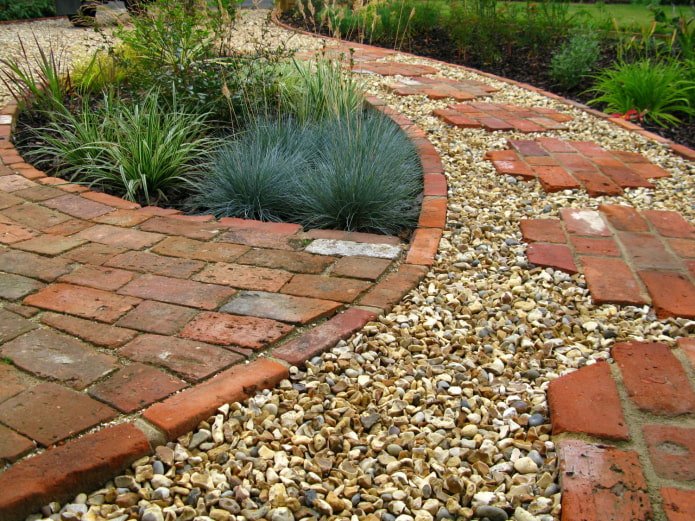

Beds
Brick beds are one of the best solutions for areas with traditional classical architecture. They fit into the landscape design laconically, giving the garden a neat, well-groomed look. There are several options for planting: you can lay out a border outlining the sowing area from bricks or build a bed 3-4 rows high.
The latter attracts gardeners with their practicality. The soil in high beds warms up faster, and the fruiting period of vegetables and berries increases by several weeks. The only drawback of brick beds is the impossibility of moving them to another place. If you want to redesign the garden, you will have to dismantle the entire structure.
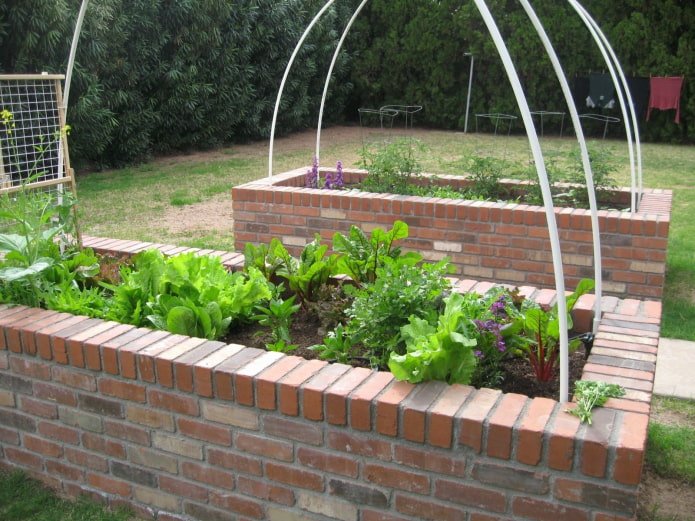
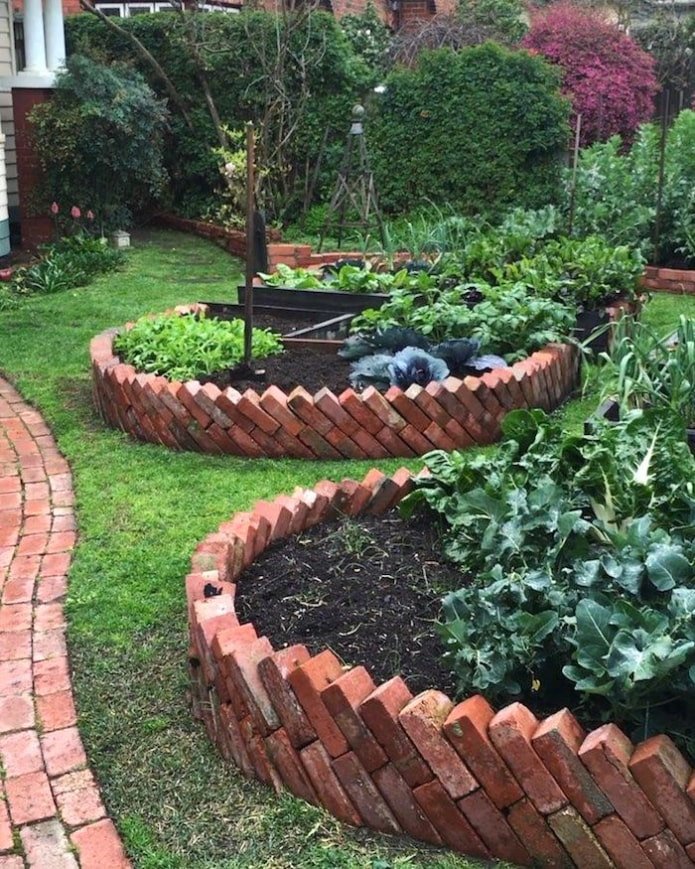
Garden fountain
Dacha ponds and decorative fountains are traditionally laid out of stone, but brick will do the job just as well. A monolithic concrete bowl is installed in a pre-dug pit. The sides and walls are laid out of brick.
A less time-consuming and labor-intensive option is to lay the bottom out with slate and then cover the base with a waterproof film. A deep pit is not required to create such a fountain. The structure can be placed right in the yard near the porch or main entrance.
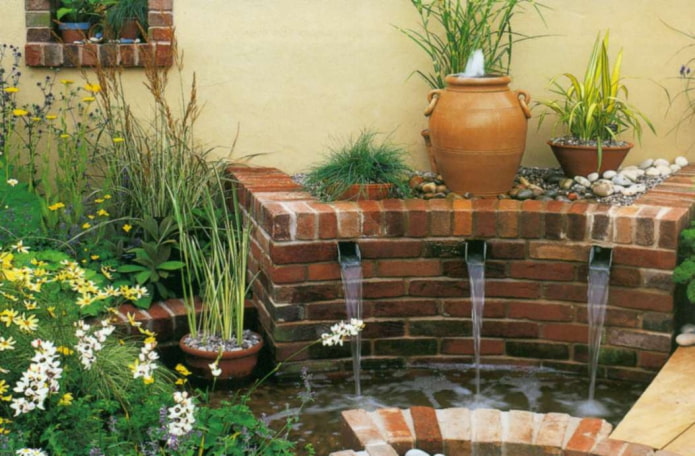
Sandbox
If there is a younger generation at the dacha, it is worth thinking about their leisure time in advance. A sandbox will definitely help keep the children busy for several hours. All the work comes down to laying out 3-4 layers of brick along the perimeter of a pre-marked rectangle or square. Many people do not fasten the bricks with cement mortar when erecting the structure. At the end of the season, such a sandbox can be dismantled, and the bricks can be stored until next summer.
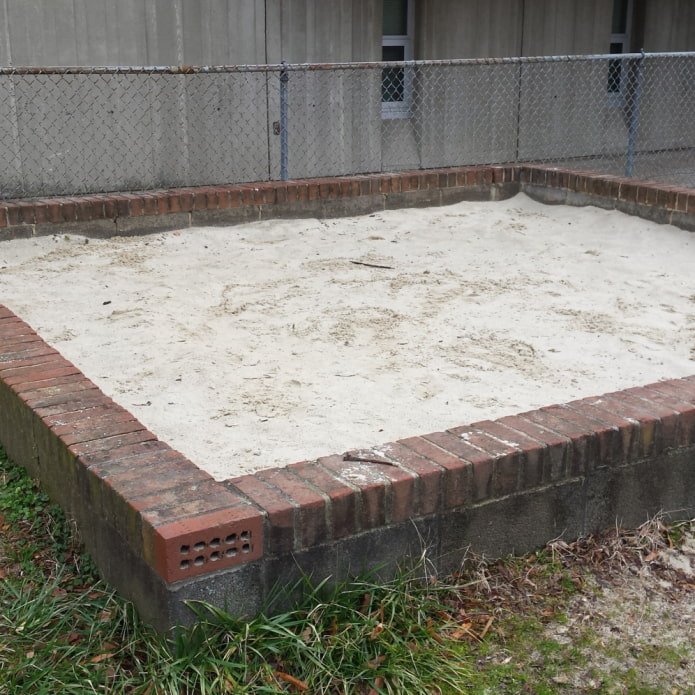
Flowers and vases
Small hollow brick flowerpots or impressive-sized vases help to decorate the space both inside and outside the summer house. They are especially often placed near the porch or at the entrance to the summer kitchen. Simple in form, they do not draw attention to themselves and become an excellent background for bright annuals, dwarf conifers and perennials.
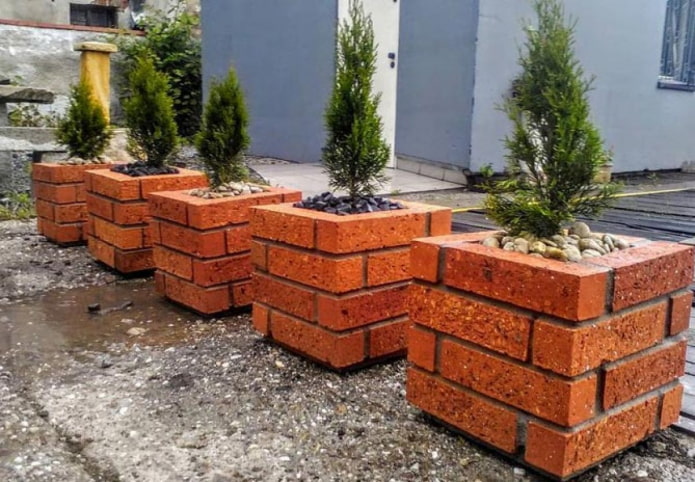
Cellar
A place for storing supplies or a small wine cellar is another option for using brick. Storage facilities located separately from a residential building are usually divided into three types:
- Recessed;
- Semi-recessed;
- Aboveground.
The construction of the latter is considered the most cost-effective and less energy-intensive. Above-ground cellars are especially often built on sites with a high level of groundwater.
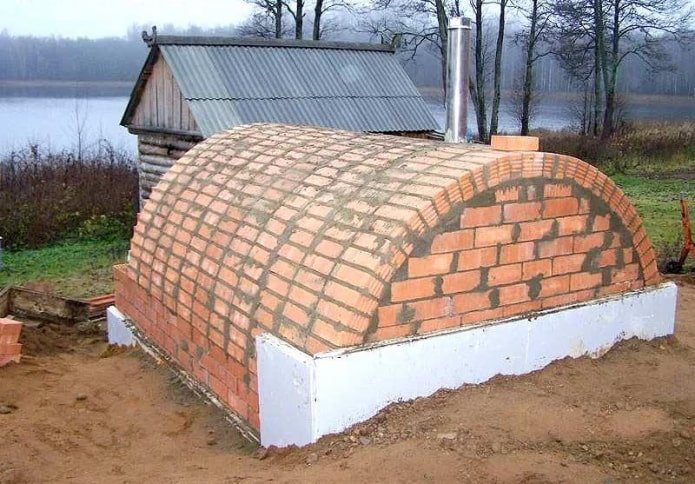
Decor for a recreation area
Fencing a recreation area with a gabion filled with broken bricks, or laying out a decorative wall reminiscent of the ruins of an ancient city is a relatively new tool in landscape design.
The wall helps hide from the sun and prying eyes, zones the site and adds atmosphere to it. The boundaries are often left “torn”, as if the masonry was left over from a building that collapsed over time. The design is complemented by ethnic arches, window frames, and antique doors.
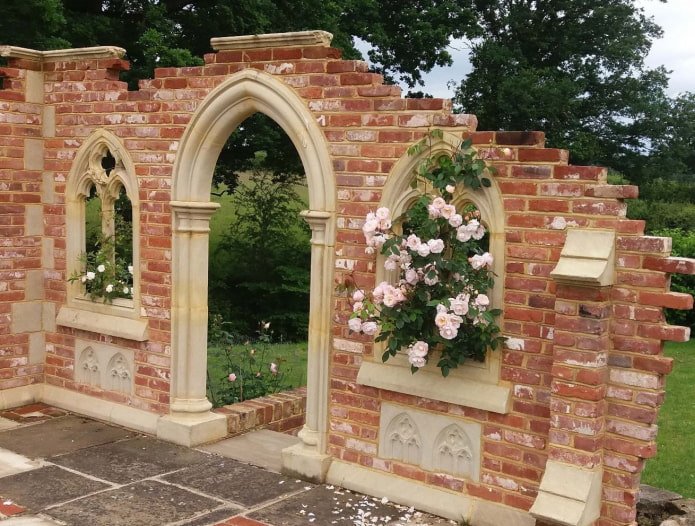
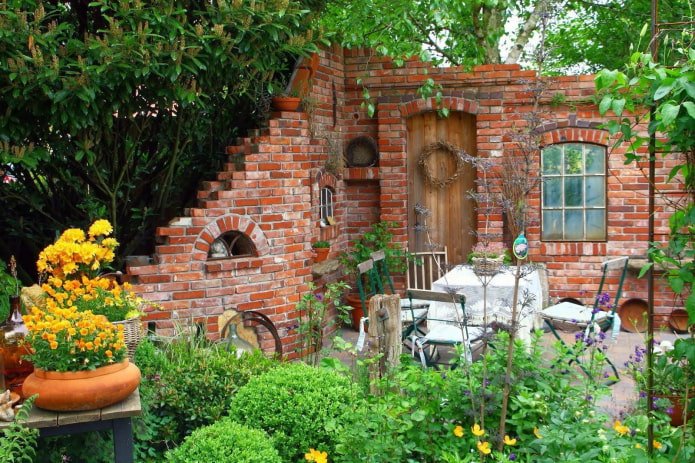
Lamp and street lamp
By drilling a small hole in the center of the brick for the socket and cord, you can create an original lamp for the country house interior. The original “lampshade” will never go unnoticed, although it will cost practically nothing. For street lighting, low posts are often built with wiring hidden inside.
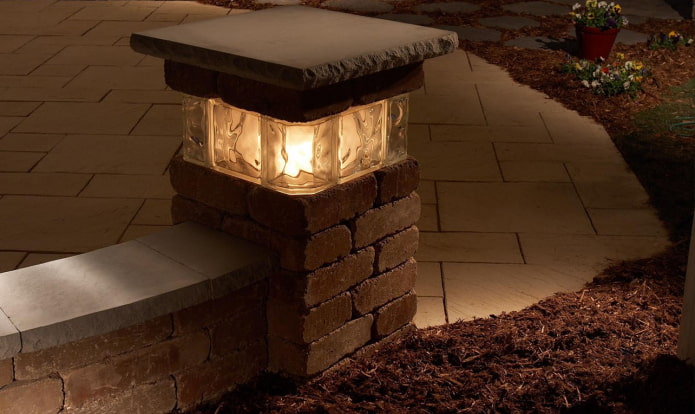
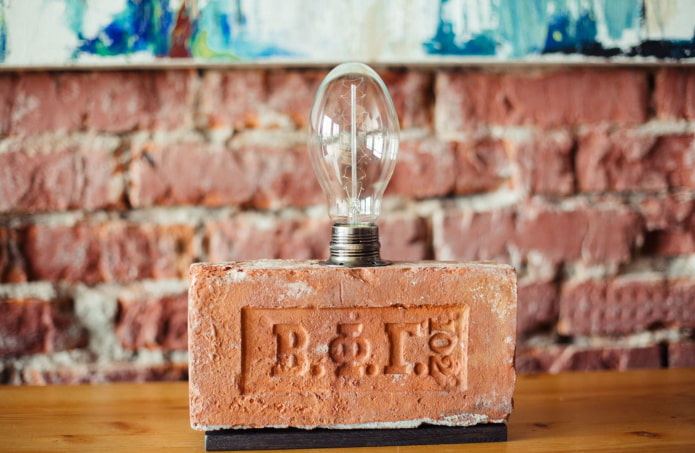
The variety of options for using brick for a summer house is due to its high performance qualities, excellent compatibility with the natural landscape and ease of work. To make an original path, borders or a bench, no special preparation is required. The work usually takes only a few hours, and the thing created with your own hands decorates the area for more than one season and over the years acquires even more color.
Now reading:
- 10 Original Ways to Decorate a Front Garden to Transform Your Yard
- Using Wall Moldings in Interior Design: 50 Inspiring Examples
- Design of a one-room apartment for families with children: 33 inspiring photos of interiors.
- Apartment design ideas 60 sq. m: layouts and more than 70 interior photos
- Dark Bathroom Interior: 35 Photos for Design Inspiration